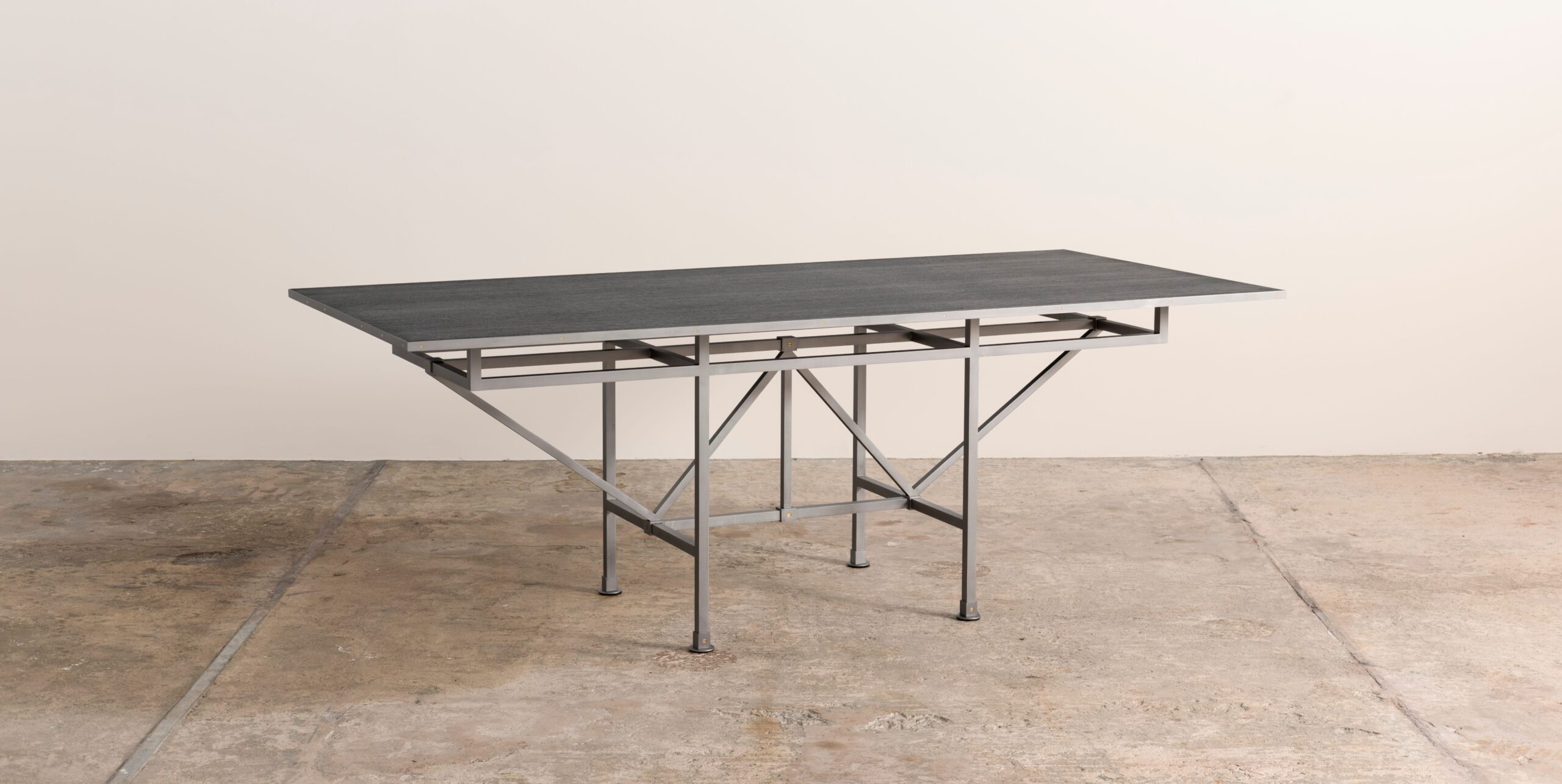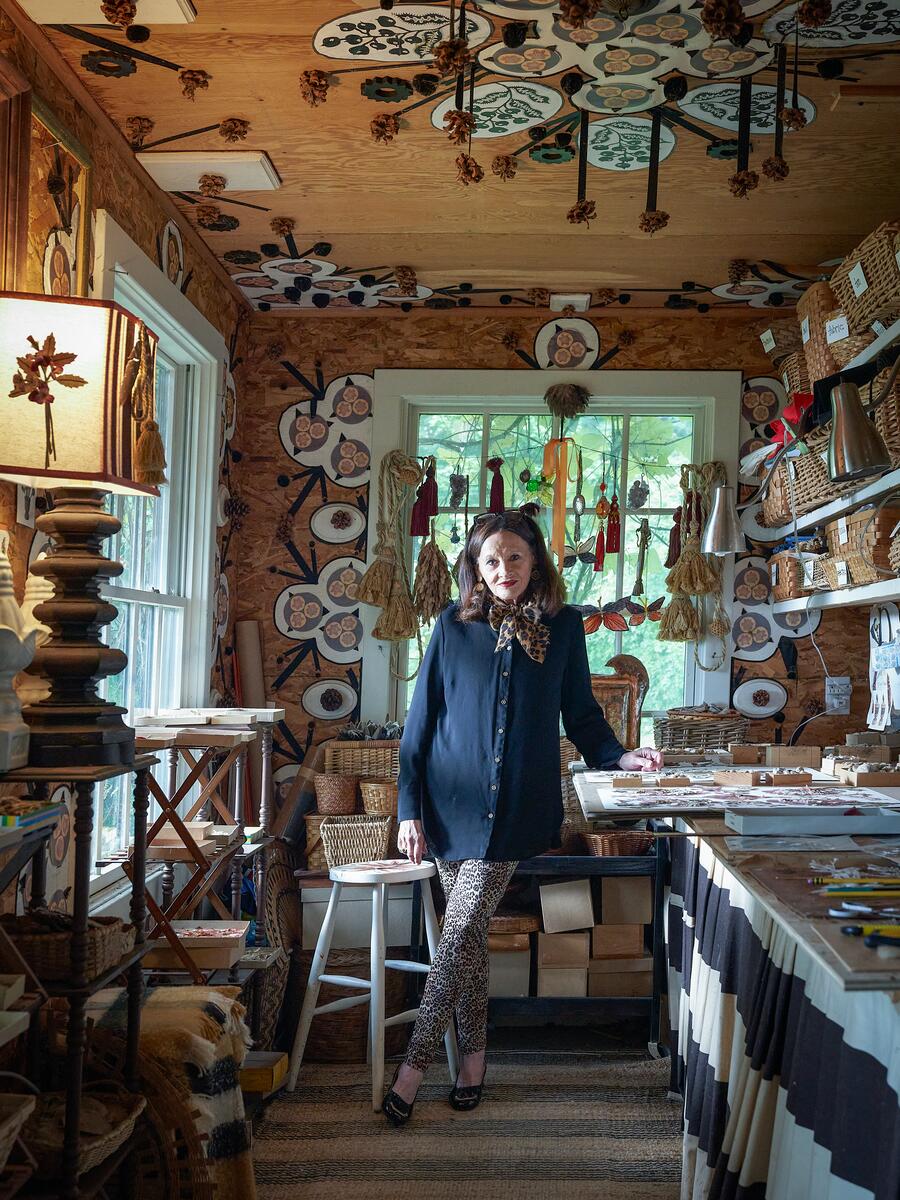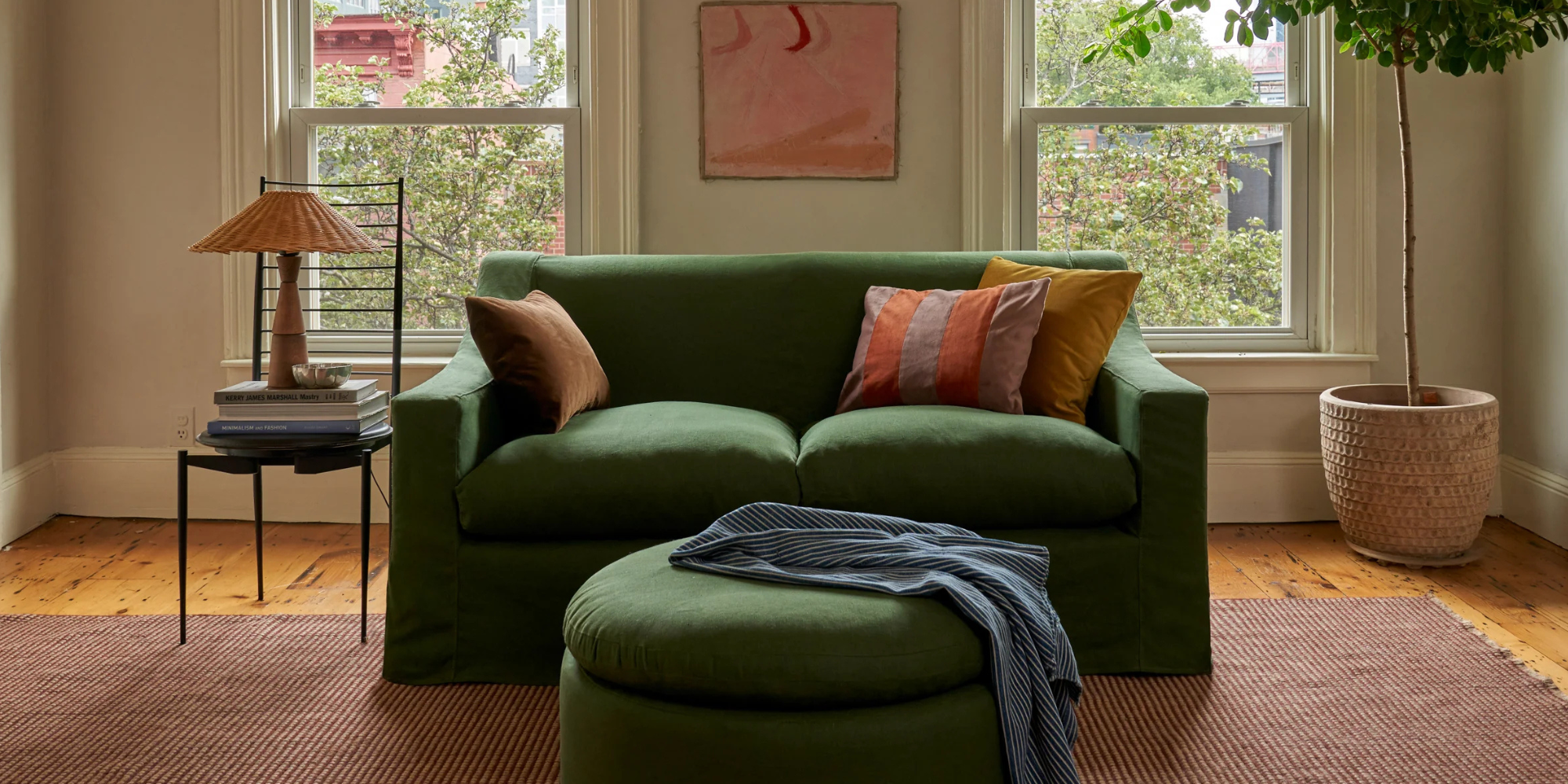In just a few short years, young design impresario, Edgar Jayet, built a reputation for exquisite craftsmanship and a body of work both firmly modern and heavy with literary and historic references. In 2024, we profiled the architect and designer as he finished designing his dual studios in Venice and Paris. Just after the release of his latest collection: Mitteleuropa at Galerie Romain Morandi, in Paris, we caught up with him again.
The collection is comprised of six pieces, all in some way referential to the Viennese Secessionist movement. The idea behind the show, says Jayet, is how to «look at the past and remaster it,” referencing the ethos behind the Secessionist movement while bringing it into the present day. The title of the collection refers to the place and context in which the original Secessionists—Josef Hoffmann, Adolf Loos, and Koloman Moser—emerged. It was at the end of the 19th century, when, as most of Europe caved to the pressure of Art Nouveau, a small number of Austrian designers explored a more integrated, pared-back approach to domestic and communal spaces. The beauty of their objects and interiors relied on sensitive material choices, highly functional forms, and a willingness to focus on minutiae.
From this dialogue sprang the Wiener Werkstätte, translated directly as the “Vienna Workshop.” The group consisted of artists and designers working in a wide range of media—ceramics, glass, jewelry, architecture, furniture, printmaking, textiles, and more—who resisted the rush to industrialize. What linked all the work made by this group in the first 30 years of the 20th century was a visual simplicity that concealed very labor-intensive and philosophically rich processes.
Jayet’s work parallels the Secessionists’ in many ways. Since the beginning of his studio’s founding, he has only worked with exceptionally skilled and specialized craftspeople, most of them French, to produce a body of work that is attractive for its quality and quietness, rather than prioritizing trend-value or superfluous surface decoration. Nowhere is Jayet’s equal dedication to form and function more visible than in Mitteleuropa. The armchairs and daybed in the collection are finished with handmade nails. All of the upholstery is in cashmere.
“We gathered together the most amazing French craftsmen to produce the collection,” says Jayet. “We have a silversmith, blacksmith, lampshade maker, two upholsters, a seat maker, a lamp maker, and the craftspeople who worked with all the nickeled brass and hardware.” Even the wall sconce in the collection—a single glass orb that rests on a metal chain harness—was designed so that electricity could travel through it’s chain to avoid any visible wiring. What’s more Secessionist than that?
The six objects in the collection—a dining table, standing ashtray, and ceiling light in addition to the armchairs, daybed, and wall sconce—build on the Secessionist movement’s ethos without appearing derivative. At Galerie Romain Morandi, visitors can see Mitteleuropa in dialogue with rare original works from the Wiener Werkstätte. The same nickeled brass that Josef Hoffmann used for a circa-1905 flower basket was used for hardware in Jayet’s work. The wooden grid that wraps around Jayet’s armchairs mimics the sides of Hoffman’s nesting tables, also from 1905, and his bookcase from a year later. Jayet’s daybed is his most complex and inventive expression of the Wiener Werkstätte ideal, as the movement never produced a daybed—Viennese society was largely too formal for such an article at the time. The form is a nod to another famous Austrian: Sigmund Freud.
The collection is more than a visual statement and expression of history’s impact on our current times. It’s also a meditation on tension: “These works were the consequence of a period that was maybe one of the most enlightened multicultural moments in the modern world,” says Jayet. “Which was followed in just a few years by one of the most horrific moments and the exact contrary position to this movement.” Mitteleuropa is a wish as much as it is a statement: How do we learn from the past and stop repeating it?




